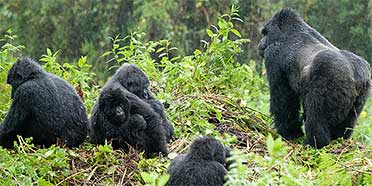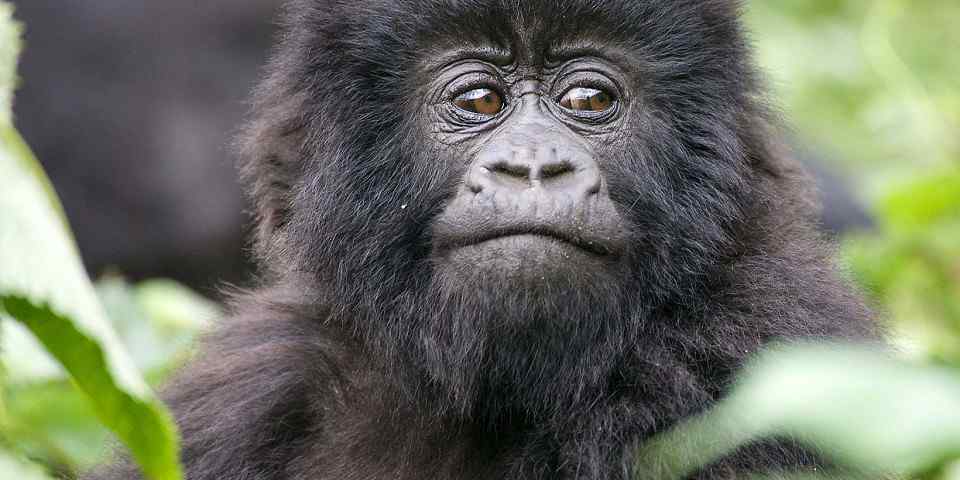
Mark is a travel writer who grew up in Africa and has written over 700 titles for Condé Nast Traveller, Travel Africa, BBC Wildlife and others.
23 people found this review helpful.
Fantastic Wildlife and Some of the Friendliest People in Africa Make Uganda Unbeatable
I spent a month travelling around Uganda with a self-drive, expedition-prepared Landcruiser and visited almost every national park in the country. Uganda was a revelation! I had not expected such a richness of wildlife nor such great concentration. Uganda has everything that her more famous neighbour Kenya has...plus such once-in-a-lifetime sightings as gorillas and chimpanzees. Queen Elizabeth National Park and Murchison Falls are justifiably the country’s biggest drawcards, but if you have time head for Kidepo Valley National Park (in the far north, bordering Sudan). I hesitate to make such a rash statement (with so much of Africa offering so much incredible safari potential...and with so much of it that I am still to see), but if I was pushed into a vote I would say that Kidepo is probably the most stunning national park in all of Africa!

Charlotte lives in Uganda and is a writer, blogger, volunteer and promoter of birding, conservation and responsible tourism. She writes for Fodor’s, Horizon Guides and Bradt, and runs an award-winning blog.
23 people found this review helpful.
Africa 101: Uganda’s Winning Blend of Nature, Climate and People
When I moved to Uganda 15 years ago, the country seemed quite small. In my first year, I covered a lot of the country: I climbed Mount Elgon, I went on safari in Queen Elizabeth National Park, I spent Easter on an island on Lake Bunyonyi, but was worried I would have quickly ‘done everything’. Fast forward a few years and I feel there are so many places that I have yet to visit; this is a reflection of how quickly the country is developing. Not only are new destinations coming online (wildlife reserves are being upgraded to national parks, the National Forestry Authority has received donor funding to develop tourism infrastructure), but previously popular places have invested in new roads, new activities are coming online and lodges have been refurbished.
The typical visitor to Uganda is attracted by its primates, particularly the gorillas, but not me. I came for elephants, and to protect them. The first time I tracked gorillas was quite by accident, but I love them more every time I see them. We often hear – and occasionally see – chimpanzees from my home on the edge of Kibale Forest. Note: do track both great ape species, if you possibly can. They’re very different experiences. (Mask wearing is now compulsory for your hour with all great apes.)
No one can visit Uganda and not notice the splendid birdlife: you may even hear the unmistakable call of wild parrots in the busy capital, Kampala. I’ve met countless visitors to Uganda who suddenly register an interest in our feathered friends. I've always loved birds but my adoration has gone to a whole other level here.
Generally speaking, Uganda doesn’t have the density of animals that you might find in the Mara or Serengeti, for example, but it does have a bit of everything: fairly easy access, famously friendly people, and the most agreeable equatorial climate. For many, Uganda is Africa 101.

Philip is an acclaimed travel writer and author of many guidebooks, including the Bradt guides to Uganda, Tanzania, Kenya and South Africa.
30 people found this review helpful.
Gorillas in the Mist – And Much Else Besides!
Uganda’s central attraction is the opportunity to track one of the world’s last surviving mountain gorilla populations on the misty green slopes of Bwindi Impenetrable or Mgahinga Gorilla National Park. This is arguably the ultimate African wildlife encounter: the simple exhilaration attached to first setting eyes on one of these gentle giants is difficult to describe. These are enormous animals – a male silverback weighs three times as much as the average man, its bulk exaggerated by a shaggily luxuriant coat – but also astonishingly peaceable, with the initially disconcerting but ultimately winning habit of staring deep into the eyes of human visitors, with soft brown eyes that appear to be seeking out some sort of connection. True, that magical hour with Uganda’s gorillas is relatively expensive and the trek up can sometimes be hard work, but in almost 30 years writing about Uganda, I have yet to meet anybody who has gone gorilla-tracking and regretted the financial or physical expense.
Sadly, international perceptions of Uganda are dominated by the excesses of the late dictator Idi Amin, who actually last set foot in the country way back in 1979. And contrary to popular misperceptions, Uganda has emerged in recent years as one of Africa’s finest ecotourist destinations, thanks to its exceptional biodiversity, which combines elements of the East African savannah and Central African rainforest.
Gorillas aside, several locations in Uganda offer excellent chimpanzee tracking, and a diversity of smaller primates abounds in Kibale Forest and Semliki Valley. The country is also perhaps the finest birding destination in Africa, with more than 1,060 species recorded in an area the size of Great Britain. Certainly, there is no better place to see the rare swamp-dwelling shoebill, along with dozens of rainforest specialists associated with the Congo Basin.
Fully recovered from the turmoil of the Amin years, Uganda’s main savannah parks – Queen Elizabeth, Murchison Falls and Kidepo Valley NPs – now support healthy populations of elephant, lion, buffalo, hippo and various antelope. Ishasha, in the far south of Queen Elizabeth NP, is the most reliable place in Africa for tree-climbing lions – a magical sight that frequently reduces the most experienced safari-goers to slack-jawed awe. Other attractions include chimpanzee tracking in Kibale National Park, Budongo Forest or Kalinzu Forest and looking for rhinos on foot in Ziwa Rhino and Wildlife Ranch.
In summation, on a well-planned 10-day safari to Uganda, you could realistically expect to see gorillas, chimps, at least four of the Big Five (elephant, buffalo, rhino and lion are all but certain, leopard more hit-and-miss), up to a dozen different types of monkey, and as many as 300 bird species including the iconic likes of shoebill, great blue turaco, black-and-white-casqued hornbill, Abyssinian ground hornbill and palm-nut vulture. There is quite simply no other country in Africa that packs in that sort of variety of wildlife.







